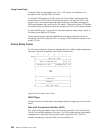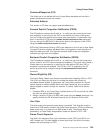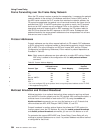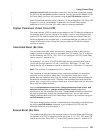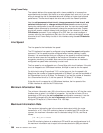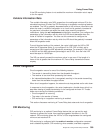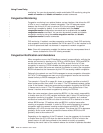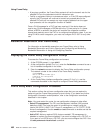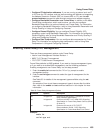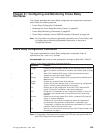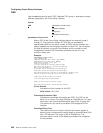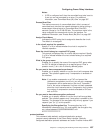monitoring. You can also dynamically enable and disable CIR monitoring using the
enable cir-monitor and disable cir-monitor console commands.
Congestion Monitoring
Congestion monitoring is an optional feature, set per interface, that allows the VIR
of VCs to vary in response to network congestion. The VIR assumes values
between the minimum IR and a maximum IR of the line speed. Congestion
monitoring is enabled by default. It can be disabled with the disable
congestion-monitor configuration command and re-enabled with the enable
congestion-monitor command. You can also dynamically enable and disable
congestion monitoring using the enable congestion-monitor and disable
congestion-monitor console commands.
CIR monitoring, if enabled, overrides congestion monitoring. If both CIR monitoring
and congestion monitoring are disabled, the VIR for each VC on the interface is set
to the line speed and does not decrease in response to network congestion.
Note: Even with compression enabled, the device uses the uncompressed size of
frames to determine if the VIR is being exceeded.
Congestion Notification and Avoidance
When congestion occurs, the FR backbone network is responsible for notifying the
sender and receiver by sending out a FECN or a BECN signal. FECN and BECN
are bits that are set in a frame to notify the DTEs at each end of a VC that
congestion is occurring. FECN indicates that congestion is occurring in the same
direction from which the frame was received; the sender is causing the congestion.
BECN indicates that the frames sent by this DTE are causing network congestion.
Optionally, the network can use CLLM messages to convey congestion information
for PVCs. CLLM messages are sent only to the congestion source and should be
treated similarly to BECN messages by the DTE.
The example in Figure 25 on page 401 shows a congestion condition at switch B
when frames are sent from router X to router Y. The FR backbone network notifies
router X that frames it sends are encountering congestion by setting the BECN bit
in frames sent to router X. The FR backbone network also notifies router Y that
frames it receives encountered congestion by setting the FECN bit.
When the router receives a frame containing BECN, it is the router’s responsibility
to throttle down the VC’s VIR (variable information rate) if either CIR monitoring or
congestion monitoring is enabled. The router does this gradually as it receives
consecutive frames with BECN until either the minimum IR is reached or a frame
without BECN arrives. FR switches often set BECN in multiple frames after
reaching a congestion threshold. In order for FR to avoid overreacting to network
congestion when the network is setting multiple frames with BECN, FR will
decrease a VC’s VIR at most once every second. This allows the VIR to decrease
gradually. As the router receives consecutive frames without BECN, the VIR
gradually rises to the maximum IR.
Depending on the operation of the FR network, it may be necessary for the device
to throttle down the VC’s VIR when the device receives a FECN to minimize the
overall amount of traffic being offered to the network as quickly as possible.
Reducing the overall load on the network reduces the number of packets discarded
Using Frame Relay
400
MRS V3.2 Software User’s Guide
|
|
|
|
|
|
|
|
|
|
|



